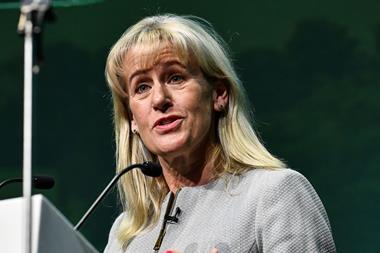Suppliers and growers are watching South America as the weather threatens to cloud an otherwise brighter outlook for global soya supply in 2012/2013.
Global soybean output in 2012/2013 is expected to be up significantly on last year - delivering a record crop - after drought hampered production in the US, the world’s biggest producer of soybeans.
However, last week, the USDA lowered its 2012/2013 forecast of soybean production in Argentina - the world’s third-biggest exporter of the crop - by 1.5 million tonnes, to 51.5 million. Between late December and mid-February, Argentina’s main agricultural region was hot and dry, which may already have “trimmed” the yield potential of first-crop soybeans, the USDA said in its Oil Crops Outlook report. Growing conditions had since stabilised following substantial rains but “a continuation of this recent weather pattern into April is critical for avoiding further deterioration of the country’s soybean crop”, it added.
Commodity prices: electricity, coffee, cocoa powder
Temperatures during the 2012/13 winter have so far averaged 3.3°C compared with an average of 4.6°C during the winter of 2011/12, and electricity prices have soared. UK electricity is now 22.9% more expensive than a year ago, having risen by a further 13.4% over the past month.
Robusta coffee prices have also continued to strengthen - at £1,437.3/tonne, they are now up 13.4% year-on-year and 7.1% month-on-month. Conversely, Kenyan tea prices have fallen by 7.7% to £2,215/tonne in the past four weeks. And cocoa powder prices have continued their decline as the market levels out after the peaks seen in mid-2011, with prices now down 29.3% year-on-year and down by a further 3.1% over the past four weeks.
USDA’s stark warning follows a report from the UNFAO last month, which forecast global soybean production for 2012/2013 1% lower than in its January forecast. It similarly reported a cut in forecasts for Argentinian production because of the dry weather. Crop estimates for Brazil were actually raised because of improved soil moisture levels in January, but the UNFAO said the situation was changing, causing it to issue a cautious outlook. “Taking into consideration recent reports of increasingly dry weather in some of the country’s leading soybean regions, the current production estimate may well require further revision in the coming weeks,” it said. After falling in January, the UNFAO reported strengthening quotations for soybeans and soymeal in the first three weeks of February on the spot and futures markets. Higher prices have also sparked concern among UK feed suppliers.
Last month, animal feed supplier Feedex Nutrition - part of BOCM Pauls - warned customers to buy soya now or potentially face higher prices in the coming weeks. “If you need any more soya between now and May, don’t leave it too late or you could be paying a high price in April/May if you need material before the vessels start arriving.”



















No comments yet